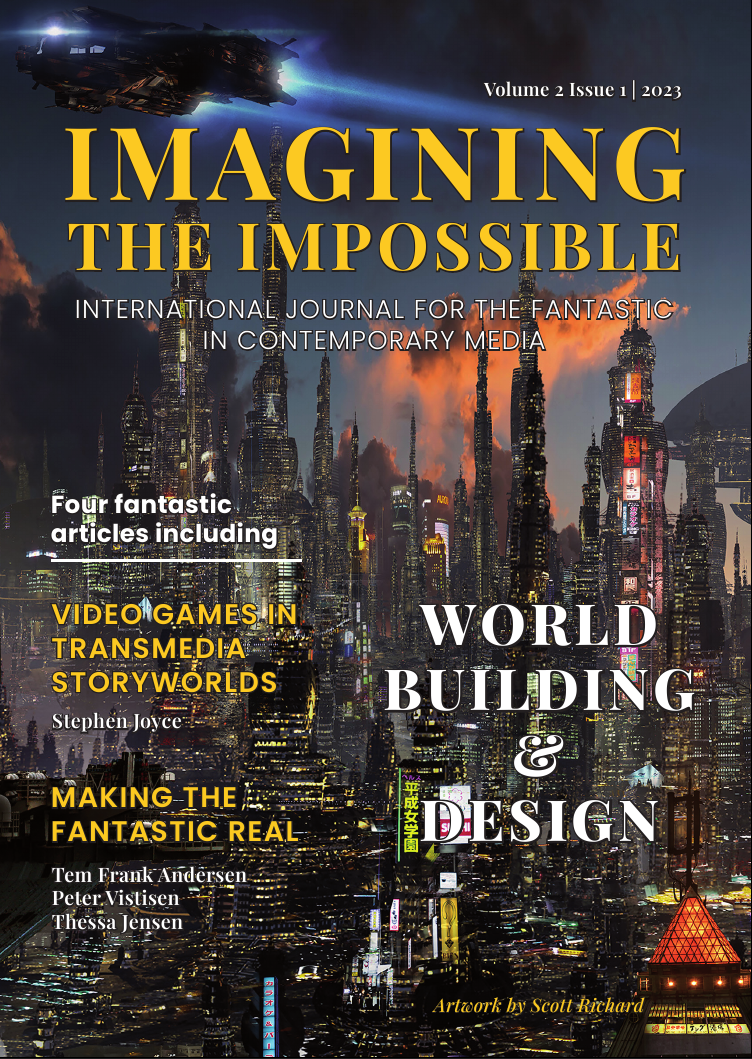Assembling Storyworlds
Editorial for Imagining the Impossible Volume 2 Issue 1 2023, World Building & Design
DOI:
https://doi.org/10.7146/imaginingtheimpossible.138359Keywords:
transmedial worlds, transmedia characters, the fantastic, computer games, films, comic books, fan studies, fantasy, The Witcher, The Hacksmith, Penny Dreadful, NamelessAbstract
A fundamental assumption regarding fantasy worlds is that they need to have a certain degree of internal coherence and consistency, otherwise the audience’s ability to immerse themselves in the storyworld will collapse under the weight of its contradictions. It is time to reconsider some of our ideas about storyworld design. “Building” imaginary worlds implies construction according to an architectural masterplan. In Imagining the Impossible volume 2, issue 1 we consider whether “assembling” may be a more productive term, implying the conjoining of different modular parts into forms that may be put together in various ways by different fans, like someone playing with Lego pieces drawn from several different sets.
References
Johnson, Derek. (2013). Media Franchising: creative license and collaboration in the culture industries. New York: New York University Press.
Wolf, Mark J.P. (2012). Building Imaginary Worlds: the theory and history of subcreation. New York:
Routledge.
Downloads
Published
How to Cite
Issue
Section
License
Copyright (c) 2023 Rikke Schubart, Stephen Joyce, Jakob Ion Wille, Christian Mehrstam

This work is licensed under a Creative Commons Attribution 4.0 International License.
Copyright author. CC by license 4.0.




